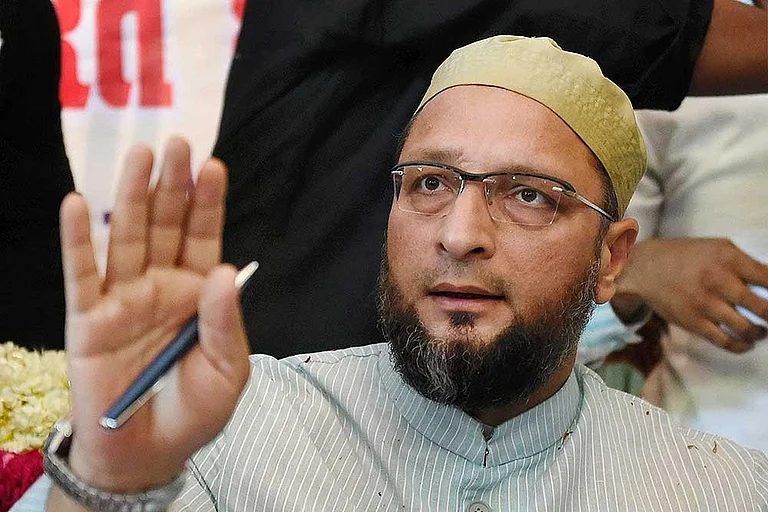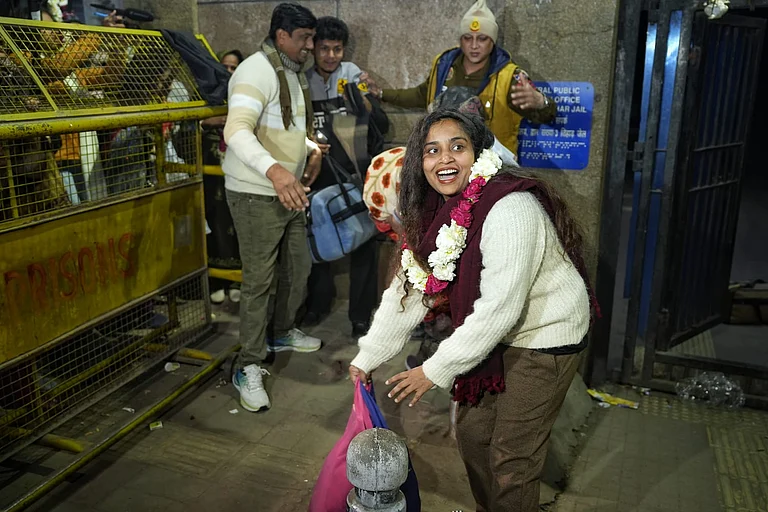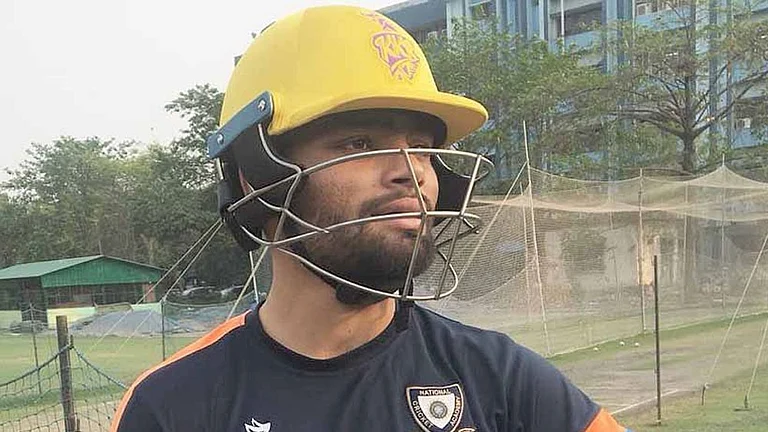In December 1998, when the CPI (ML-Liberation) general secretary Vinod Mishra died of cardiac arrest at the age of 51 after leading the party since 1975, the organisation still had one of its founder-leaders, Swadesh Bhattacharya alias Raghu, in its top leadership, the Politburo. But the party’s highest decision-making body, the central committee—of which the Politburo is a part—chose an energetic and erudite 38-year-old Politburo member, Dipankar Bhattacharya, to succeed Mishra.
Bhattacharya was not related to Mishra in any way, except for being close comrades. He had made his way to the party’s top leadership by his early 30s, thanks to his organisational skills, and has been leading the party since then. When the time comes for a successor, it can safely be said that no one related to Bhattacharya will have any chance. The central committee will choose from among its members, likely a member of the Politburo.
Despite leading organisations for over two decades, leaders in communist parties develop no right over the party. In a country where the feudal inheritance system survived by its entry into the political sphere—giving rise to political dynasties in post-colonial India—communist parties present a stark contrast.
Does it mean communist parties can’t have multiple members from the same family in leadership roles? No. On the contrary, there is no dearth of couples in various ranks, dedicating their lives to the party and carrying out different responsibilities.
The CPI(M)’s top decision-making body, the Politburo, has two members of the Karat family—Prakash, the former general secretary, and his wife, Brinda. The CPIML-Liberation’s central committee has Lakshmi Krishnan and her daughter, the more famous Kavita Krishnan.
Among clandestine communist parties, the CPI(Maoist)’s Politburo, since 2004, had two brothers—Koteswara Rao and Venugopal, until the former died in 2011. While Koteswara was based in West Bengal since 1998, Venugopal was based in Chhattisgarh. Koteswara’s wife, Sujata alias Moyna, too, was in a leadership role in Chhattisgarh’s Bastar. The Maoist party also had multiple members from two families in its central committee—Prashanta Bose and his wife, Sheela Marandi, and Kobad Ghandy and his wife, Anuradha.
These examples, however, have not been criticised as dynasty politics. In communist parties, no one inherits a place through family relations. Ideology binds stronger than blood relations, communists believe. In communist parties, everyone has to make her or his way up by virtue of one’s own contribution. Everyone named in the previous paragraphs, therefore, earned their own places.
In the current Kerala government, CPI(M) chief minister Pinarayi Vijayan’s son-in-law Mohammed Riyas serves as a minister. But Riyas had become a leader in his own right—having served as the national president of the party’s youth wing, the DYFI, before marrying Vijayan’s daughter, Veena, in 2020.
Who’s the leader?
In the Indian context, the first contrasting picture in respect of other regional and nationalist parties comes in the shape of leadership pattern. While most of India’s regional and nationalist parties are driven by personality cults—a popular leader forms a party and then the leader’s family inherits the leadership—communist parties believe in collective leadership. The top leader, the general secretary, therefore, is not its supreme leader. Development of a personality cult around any leader is usually restricted.
Take the case of Jyoti Basu of the CPI(M). One of the most popular leaders of the party, and a founder-member, Basu had already led a Left coalition government in West Bengal for 19 years when, after the 1996 Lok Sabha elections, parties belonging to the United Front at the national level named him as their unanimous prime ministerial choice.
Basu had not contested the Lok Sabha elections but his public image and stature as a leader prompted the leaders of the 13-party coalition to put pressure on the CPI(M) to let him take up the country’s top job. Basu was in favour of the proposition, arguing that the Left would be more effective than any other party in keeping the coalition together and pushing for pro-people policies. Even the party’s general secretary, Harkishan Singh Surjeet, was in favour of Basu accepting the offer.
But the party’s central committee voted to oppose Basu and Surjeet, saying they wouldn’t join the Union government unless the party got a majority. The general secretary had to accept the majority decision.
At every level, it’s the central committee that provides leadership. At the top level, it is the collective leadership of the Politburo that plays a leading role, but even that is answerable to the central committee, the highest decision-making body elected through a party congress, usually after every 3-4 years.
Communist parties have seen general secretaries being restrained, demoted, or even expelled. In 1948, the undivided CPI elected B.T. Ranadive as its general secretary. But not only did it demote him in June 1950, it also dropped him from the Politburo and central committee. It took him another six years to return to the central committee. P.C. Joshi, who was the general secretary in 1947, was removed in early 1948 and expelled in 1949. He was readmitted in 1951.

This ritual exists even among Maoist outfits. Kondapalli Seetharamaiah, the founder and general secretary of the CPIML-PW (precursor to the CPI-Maoist), was expelled from the party in 1991, after he led it for 11 years. A group of leaders in their 30s—Ganapathy, Kishanji, Azad, Vasavraj—took charge and collectively led the party for the next two decades.
In 2018, CPI(M) general secretary Sitaram Yechury’s draft political resolution, proposing a differential approach for the BJP and the Congress—identifying the former as the principal danger—was defeated by 55-31 votes in a central committee meeting. The majority favoured maintaining equidistance from both.
An offended Yechury had reportedly threatened to step down, but was persuaded against it. He was re-elected as general secretary twice since then—but is still known as the general secretary who finds himself in a minority position more often than not.
Succession
In communist party structures, the central committee makes up the top leadership and the state committee makes up the second-rung. In unforeseen situations like the death of the general secretary, or secretary of any other level of committee, one of the leaders from the committee is chosen.
There is no quota—neither for women, nor SC/STs or youth—in the top leadership. Ideological moorings and leadership skills are the main selection criteria. As a continuous process of bringing up the next generation leadership, new and young faces are usually inducted to the committees through conferences ahead of the party congress. This happens at all levels, from unit or area committees to the central committee. Usually, leaders from the student and youth wings are inducted in the main committees to ensure youth representation.
In 2018, CPIML-Liberation’s new central committee elected youth leaders Sucheta De (34), Raju Yadav and Manoj Manzil (both 35).

In the CPI(M), making it to the central committee is not easy. The last time those aged in their 30s found entry was nearly four decades ago. The party congress in 1985 saw two members in their 30s getting elected to the central committee—37-year-old Prakash Karat, who had already served as Delhi unit secretary for three years, and the 33-year-old Yechury, who was invited to the central committee a year before, as the leader of its student organisation.
However, to deal with the problem of the high average age in various committees, the CPI(M) in recent years has capped the highest age for a central committee member at 75, while the West Bengal unit put the highest age for area committees at 65, for district committees at 70, and for state committees at 72.
According to Mridul De, who recently retired from the West Bengal state secretariat of the CPI(M) due to the newly-introduced age limit of 72 years, next-gen leadership rises in communist parties either from the grassroots or from mass organisations. “A leader rises from a basic committee—the unit or area committee. From there, a leader’s political understanding and organisational skills clears his or her way up to the higher committees. This takes time, experience and dedication. Entry to any committee happens through a democratic process, sometimes through consensus, sometimes through voting. Another way one can enter a state committee or the central committee is by reaching the top of mass organisations,” De says.

He agreed that the party organisations needed a mix of seniors, middle-aged and young leaders for the ‘right balance’. “It’s good to have those aged in their 30s and 40s in the highest committees, so that the seniors can get a decade or two to groom them,” he adds.
The recently-elected West Bengal state committee of the CPI(M) saw the entry of 28-year-old Srijan Bhattacharya, who had served as a secretary of the party’s student wing in the state, 31-year-old Pratik-ur Rahman, who served as the president of the student wing, 35-year-old Mayukh Biswas, the all-India general secretary of the student wing, 36-year-old youth leader Shatarup Ghosh and 38-year-old Minakshi Mukherjee, who served as the state president of the youth wing.
Similarly, the Kerala state conference relieved 13 senior leaders from the state committee for having crossed the age limit of 75 years, while chief minister Vijayan was given an exception. Among new inductees were 40-year-old A.A. Rahim, the national president of the youth wing and 33-year-old V.P. Sanu, the SFI national president.
In 2019, the CPI, the country’s oldest communist party, inducted 32-year-old student leader Kanhaiya Kumar to its highest decision-making body, the national executive council. However, Kumar was expelled from the party two years later.
The underground CPI-Maoist party took a similar decision in 2017, when its central committee urged ageing leaders at all levels to voluntarily resign from their respective committee memberships, and to take up different roles. The 68-year-old general secretary, Mupalla Lakshman Rao alias Ganapathy, himself offered to step down to set an example.
Though his offer was accepted, he continued to lead for a few more months to complete the process of handing over charge to Basavaraj alias Nambala Keshava Rao, who is five years younger. Similar generational changes were brought in at all other levels of its committees, claim sources within the Maoist party.
(This appeared in the print edition as "No Family Business")


























